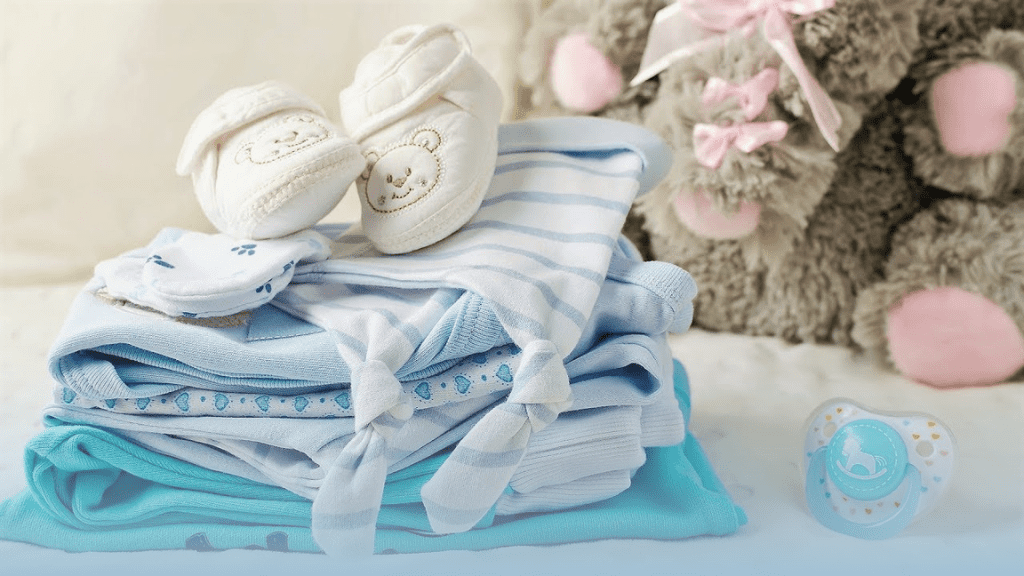
Table of Contents
How to fold baby clothes? Does it have any benefits? Of course! A tidy baby drawer is a boon for a stressed newborn mom. Imagine living in a closed condition and having to dress a newborn with an unorganized dresser: chaos, that’s what it is.
Keeping your baby’s clothes neatly folded can be helpful even when you are doing one of those dark diaper changes. When you are exhausted and bleary-eyed, you will thank yourself and feel proud that you know exactly where to look for that clean pajamas. No more meltdowns!
Did you also know that taking time to neatly arrange your baby’s clothes in an organized way can deal with exhaustion? You must be going berserk over your newborn baby’s essential shopping list but let us assure you that when it’s hard for you to think, an organizational activity can bring you to focus and save your time and energy in the long run. Mums have testified they don’t want to spend time looking for a onesie when they can have those baby snuggles.
Scroll down to know how to fold baby clothes to save space in the perfect way!
How to Fold Baby Clothes: What Methods to Follow
There are two answers to this question: the traditional way and the KonMari method also called file folding. The traditional way to fold baby clothes or just any cloth is to fold them and stack them in a pile inside a drawer. The KonMari method, however, involves folding the clothes and stacking them in the drawer in such a way that you can see all of them at once.
So which method is the best? The answer is in your hands, mama! Which is best for your comfort, you follow that. If you are okay with the traditional way and have no qualms in pulling out the clothes, then well and good. But if you think you might mess up other clothes while pulling that one onesie out, then the KonMari method is for you.
Also, if you have a shelf instead of a drawer to put your baby’s clothes away, then you should fold their clothes the traditional way because on a shelf you won’t be able to see the clothes if you follow the KonMari method. You can use this method to fold all kinds of clothes except dresses and jackets (they prefer hooks or hangers). Let’s take a deeper look into how to fold baby clothes using the KonMari method.
The KonMari Method
The KonMari method brought by Japanese TV presenter Marie Kondo can be used for both long and short sleeve clothes. Let’s learn how to fold baby clothes in a dresser be it onesies, pants, or sleepers!
How to Fold Baby Onesies
- Lay the onesie on a smooth flat surface and smoothen its creases.
- Fold it vertically in half (from sleeve to sleeve).
- Fold its arms inwards so that they lay on top of the onesie’s body.
- Fold it horizontally in half (this time from buttons to collar).
- Again fold it horizontally in half
How to Fold Baby Sleepers
- Spread the baby sleeper on a flat smooth surface face down.
- Smoothen its creases with your hand.
- Fold it vertically in half (from sleeve to sleeve and leg to leg).
- Fold its arms in so that they lay on top of its body.
- Fold it horizontally in half (from feet to collar).
- Fold it again in half horizontally (if possible)
How to Fold Baby Pants
- Spread the baby’s pants on a flat surface and smoothen their creases.
- Fold them leg to leg (vertically).
- Fold them ankle to waist (horizontally).
- Again fold them horizontally.
How to Fold Baby Clothes Using The Tuck Method
The tuck method is perfect for baby pants and shirts. Even though pants can be folded using the KonMari method, they may come undone every time you try to pull one out of the drawer. Here’s how to tuck-fold your baby’s pants:
- Smoothen out the creases by laying the pants on a flat surface.
- Fold leg to leg (vertically).
- Fold the ankles as if you are cuffing the pants.
- Fold the waist down twice to line up with the bottom end.
- Tuck the folded edge into the top ankle opening.
The Bottom Line: How to Fold Baby Clothes
When you are a first-time mum and have a baby to parent, bathe, soothe, and feed, learning new activities might seem tiring. And folding their itsy bitsy clothes can be exhausting in itself if you don’t know how to do it properly. You might miss that one sock when those tiny feet are shivering or you won’t find the right diaper during those midnight nappy changes. Follow our methods on how to fold baby clothes and thank us later!









